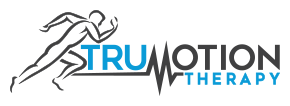August 21st, 2018
1. Rest Fixes All
Many people think that if they simply rest an injury it will go away.  Most running injuries are due to repetitive stress.  The miles/intensity of miles we put on the body exceeds what the body can tolerate.  Time off can be a nice reset, and may be necessary for a short period, but what did you do to fix the problem during that time?
Let’s look at achilles tendonitis, one of the more common running injuries.  It develops because the strength of the tendon cannot handle the stress being put on it at the time.  That stress can be the number of miles run or something related to running form. Either way, to truly recover from an injury like achilles tendonitis, and prevent it from coming back, it’s important to strengthen the tissue.  This does not happen with rest alone!
This applies to most running injuries including plantar fasciitis, shin splints, runners knee, and IT band syndrome.  Stress fractures do require significant rest, but some low load/impact work can be done to help facilitate healing.
2. I Need to Stretch More
Flexibility in distance runners is a little overrated. ¬†We don‚Äôt want to be as stiff as a 2×4, but being loose as a yogi isn‚Äôt good either. ¬†First off, the running stride is a fairly compact movement with a small range of motion requirement. ¬†Second,¬†tight runners are actually more efficient than flexible runners.¬†Tight muscles and tendons act like springs, storing and returning energy in the form of elastic recoil.
Sprinters, on the other hand, need more flexibility.
To learn more about this check out another article I wrote called¬†Your Hamstrings Probably Aren’t Tight, But If They Are, Who Cares?¬†¬†I promise the content is more interesting that the title is catchy.
3. A Forefoot Running Stride is the GOAT
Born to Run by Christopher McDougall is an amazing book, but it put the idea out there that a forefoot running stride is the Greatest Of All Time.  McDougall claimed it reduces injuries, lessens the stress on the body, and everyone should do it.
We tend to group the foot strike into two categories: forefoot/midfoot and heel strike.  Research has found the best one to go with is the one that feels most natural to you.  It matters less which part of your foot hits the ground first and more where your foot hits the ground in relation to your center of mass.  Having your foot land too far in front of your body, what we call over-striding, is like putting on the brakes with each step.  Whether you heel strike or forefoot strike, you want your foot to land slightly in front of your body to minimize impact.
Check out the video below for an example of what over-striding looks like along with 2 other common running faults. Click here for fixes to these common faults.
4. Foam Rolling is a Necessary Evil
It might be evil, but it’s certainly not necessary. Most people roll with the intention of breaking up scar tissue and loosening tight muscles. Hate to break it to you, but your body is too strong to allow a round piece of foam to make those changes.
For more info on why foam rolling may not be all it’s made out to be watch the video below.
5.  Recovery Fads, Activity Trackers, and Supplements Will Make Me Faster
Technology will never replace smart training.  Intelligently programmed work outs, experience, and straight-up grit are the best performance enhancers on the market.
Author Alex Hutchinson in his book Endure says it best:
‚ÄúAll the blandishments of modern sports science- altitude tents and heart-rate-variability tracking and bioengineered sports drinks and so on- amount to minor tinkering compared to the more elemental task of pushing your mind and body in training, day after day, for years.‚ÄĚ
The TruMotion Approach to Treating Running Injuries
Having been a runner in high school and college and having competed post-collegiality, I have experienced my share of running injuries. In fact, it was a running injury that caused me to see my first chiropractor.
Every patient experience begins with a thorough consultation where we discuss previous injuries, current injuries, and running goals.  This is followed by a detailed, running-specific movement screen designed to determine the root cause of the problem.
Treatment involves strengthening the tissues that need strengthened and stretching those needing stretched.¬† We also determine how much running is acceptable for you at this time.¬† There’s a sweet spot between running enough to help strengthen the weak areas but not running too much as to worsen the injury.¬† Like mentioned above, it’s a myth that total rest will fix any injury.
If you’re experiencing a stubborn running injury let‚Äôs develop a plan of recovery together.¬† Click here to start running pain free again!





